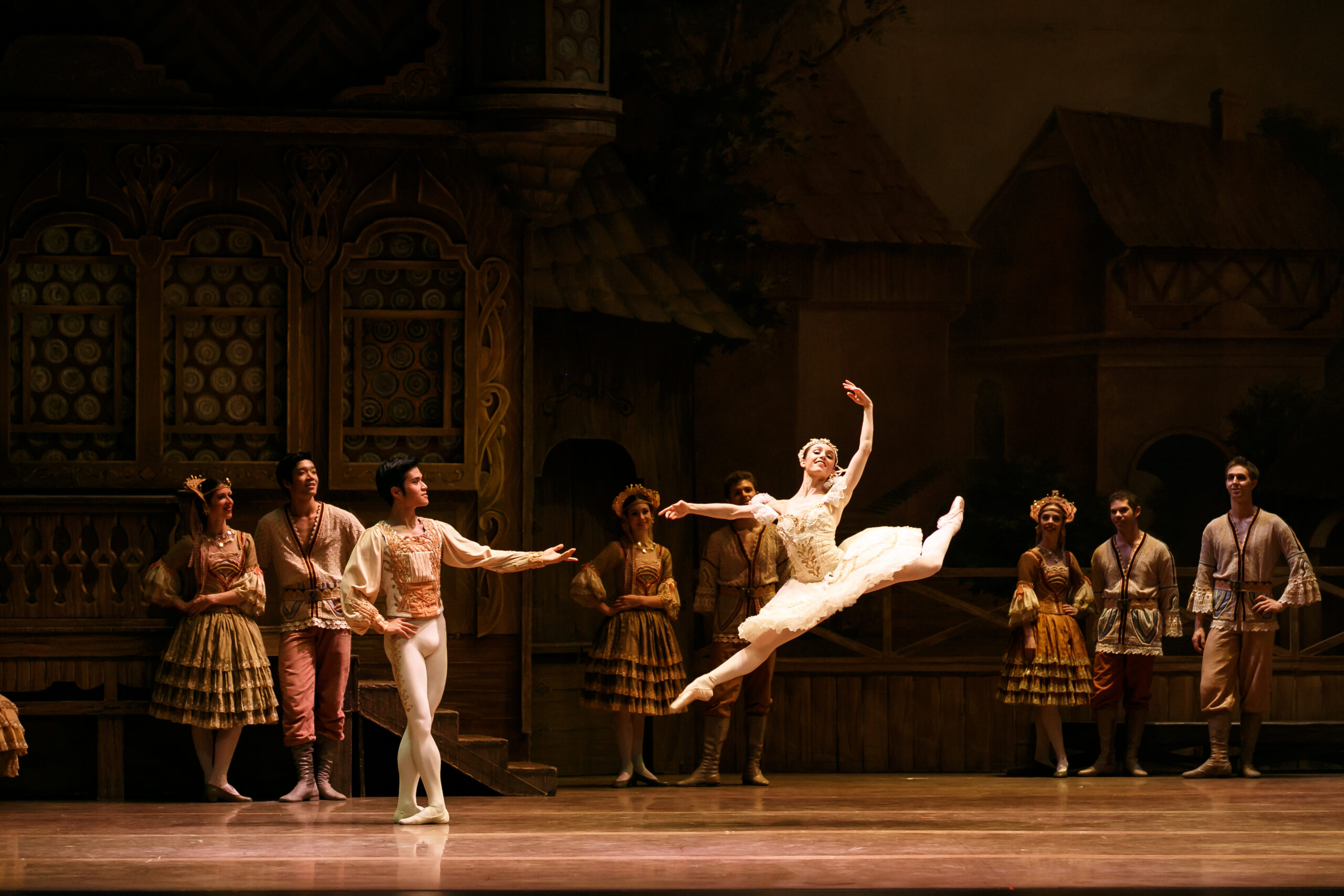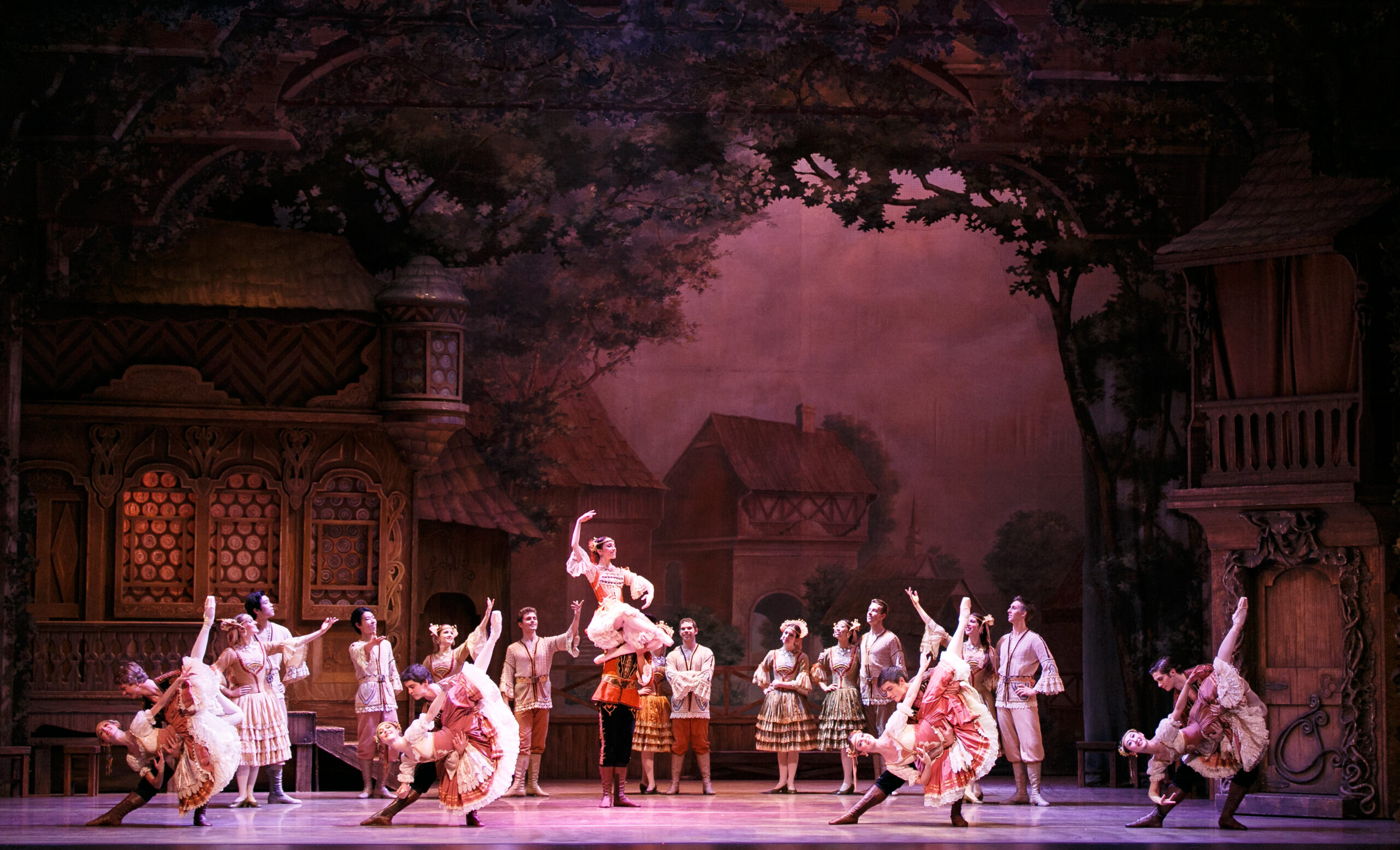11.11.2024
Coppélia: A Beloved Ballet Classic
The Wedding Pas de Deux in Coppélia’s Act III is a joyous highlight that celebrates the union of Swanhilda and Franz with lively grace and romantic elegance. This pas de deux, featured in our Tutus on Tour 2025 repertoire, is a celebratory dance, combining tenderness with virtuosic displays as both characters express their newfound happiness.

Swanhilda’s variations are playful yet technically demanding, showcasing her character’s spirited personality through intricate footwork and delicate jumps.
Franz’s variations, in turn, emphasise strength and flair, with energetic leaps and turns. The pas de deux culminates in a radiant coda that blends quick, synchronised movements and joyous, expansive gestures, symbolising the couple’s harmonious bond.
This celebratory dance not only brings a climactic close to the ballet but also encapsulates the charm and lightheartedness that make Coppélia a timeless classic.

Coppélia tells the humorous story of Swanhilda, a young villager engaged to Franz, who becomes intrigued by a beautiful girl on Dr. Coppélius’s balcony.
Mistaking the girl for human, neither Swanhilda nor Franz realises she’s Coppélia, a life-sized doll created by the eccentric inventor Dr. Coppélius. Jealous and curious, Swanhilda sneaks into his workshop and discovers the doll’s true nature.
In a twist, Swanhilda disguises herself as Coppélia to outwit Dr. Coppélius, eventually exposing his creation as lifeless. The ballet’s lighthearted resolution ends with Swanhilda and Franz reconciled, dancing a joyful wedding celebration while Dr. Coppélius is left to mourn his shattered dreams.

The ballet is known for its lighthearted and intricate choreography that blends classical ballet with playful, character-driven movements.
Originally choreographed by Arthur Saint-Léon in 1870, the ballet’s structure showcases technical prowess while incorporating mime and folk-dance elements to bring out the comedic elements of the story.
Later reinterpretations, like Marius Petipa’s version, have enriched the choreography, making it a vibrant staple of ballet repertoires worldwide.

The enchanting score of Coppélia was composed by Léo Delibes, whose music is celebrated for its lively energy and lyrical beauty. Delibes’s compositions complement the story with distinct themes for each character and scene, from Swanhilda’s playful motifs to the magical, otherworldly tones of Dr. Coppélius’s workshop.
The ballet’s music includes traditional folk influences, especially in pieces like the Mazurka and Czardas, reflecting the Eastern European setting. Delibes’s score was groundbreaking for its time, showing how ballet music could support the drama and enhance the emotional texture of the choreography.
Today, Coppélia’s music remains one of ballet’s most beloved scores, perfectly balancing lightness, mystery, and joyful celebration.